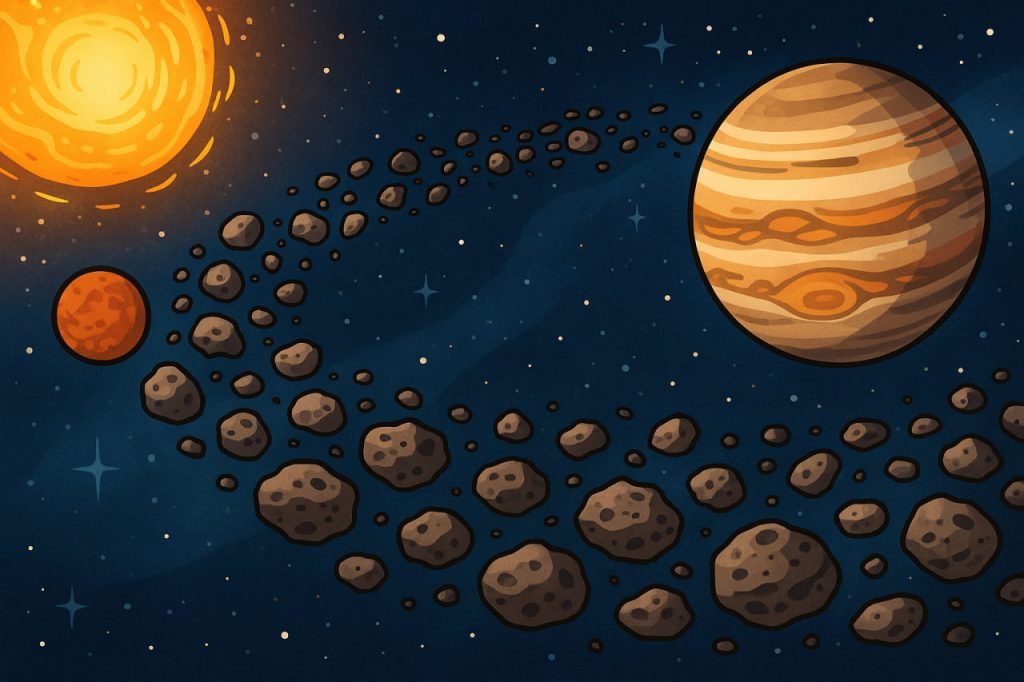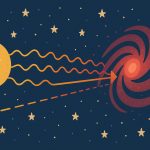The asteroid belt is a vast region in space filled with rocky objects of various sizes orbiting the Sun. These objects, called asteroids, are remnants from the early formation of the solar system. While often portrayed in science fiction as chaotic, the real asteroid belts are mostly empty space dotted with millions of small celestial bodies. The most well-known of these belts lies between Mars and Jupiter, and plays a significant role in understanding the evolution of planets and the structure of our cosmic neighborhood.
The Main Asteroid Belt: Between Mars and Jupiter
The main asteroid belt is located between the orbits of Mars and Jupiter, roughly 2.1 to 3.3 astronomical units from the Sun. It contains millions of rocky bodies, ranging in size from dust particles to dwarf planets like Ceres, which is the largest object in the belt.
Despite the number of objects, the asteroid belt is mostly empty. The total mass of all its contents is only about 4% of the Moon’s mass. The reason this material never formed into a planet is likely due to Jupiter’s strong gravity, which disrupted the formation process during the early history of the solar system.
Other Asteroid Belts and Groups
In addition to the main belt, there are other asteroid populations:
- Trojans: These asteroids share orbits with large planets like Jupiter and Neptune, clustering at stable points known as Lagrange points.
- Hilda asteroids: Found in a 3:2 orbital resonance with Jupiter.
- Centaurs: Objects that orbit between Jupiter and Neptune, displaying characteristics of both asteroids and comets.
- Kuiper Belt (technically not an asteroid belt): Located beyond Neptune, it includes icy bodies like Pluto and Eris, but is often discussed alongside asteroid regions due to its similar structure.
What Are Asteroids Made Of?
Asteroids are made of rock, metal, or a mixture of both. They are typically classified into three main types:
- C-type (carbonaceous): Dark and rich in carbon, these are the most common.
- S-type (silicaceous): Made mostly of rock and metal.
- M-type (metallic): Composed largely of nickel and iron.
Their composition provides clues about the conditions and materials present during the formation of the solar system over 4.5 billion years ago.
Why Asteroid Belts Are Important
Asteroid belts help scientists understand planetary formation and the early history of the solar system. Some asteroids are considered “time capsules”, preserving primitive material. They are also important in the study of planetary defense, as some objects may cross Earth’s orbit and pose impact threats.
Missions like NASA’s Dawn, OSIRIS-REx, and the European Space Agency’s Hera explore asteroids to learn more about their properties and potential for resource mining or impact mitigation.
Asteroids and Planetary Threats
While most asteroids remain in stable orbits, a small number are classified as Near-Earth Objects (NEOs). These can potentially collide with Earth, and monitoring them is a priority for space agencies. Although large impacts are rare, understanding the dynamics of asteroid belts helps scientists track and predict future risks.
Glossary
- Asteroid: A rocky body orbiting the Sun, smaller than a planet.
- Asteroid belt: A region in space filled with many asteroids, primarily located between Mars and Jupiter.
- Ceres: The largest object in the asteroid belt and a recognized dwarf planet.
- Astronomical unit (AU): The average distance between Earth and the Sun (~149.6 million km).
- Lagrange points: Stable positions in a planet’s orbit where objects can remain fixed relative to the planet and the Sun.
- Near-Earth Object (NEO): An asteroid or comet with an orbit that brings it close to Earth.
- Planetary defense: The study and preparation for potential asteroid impacts on Earth.


